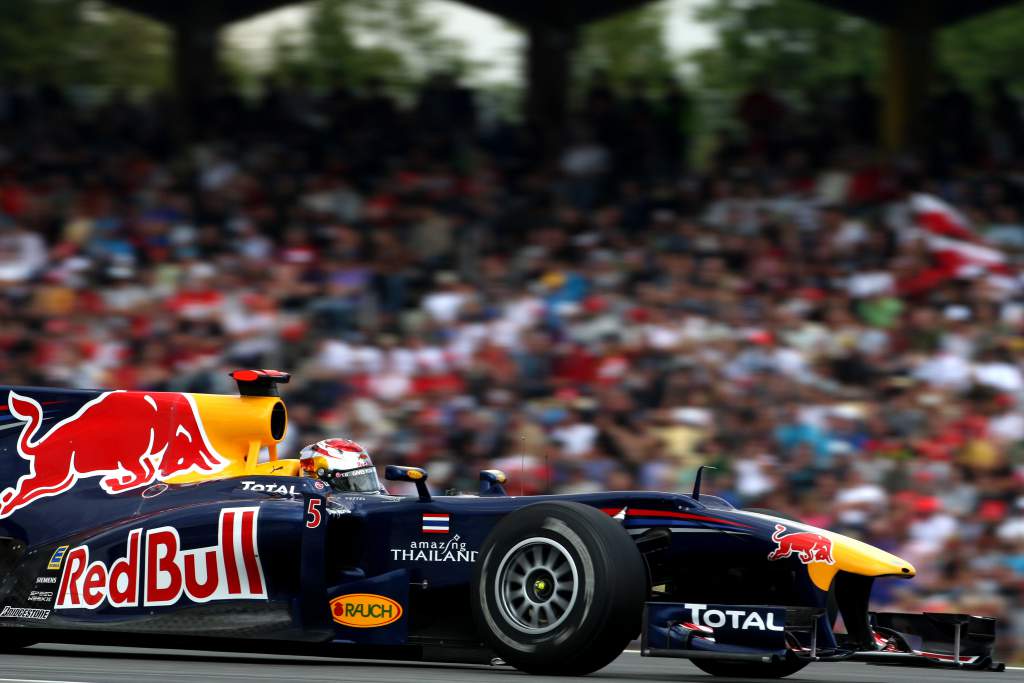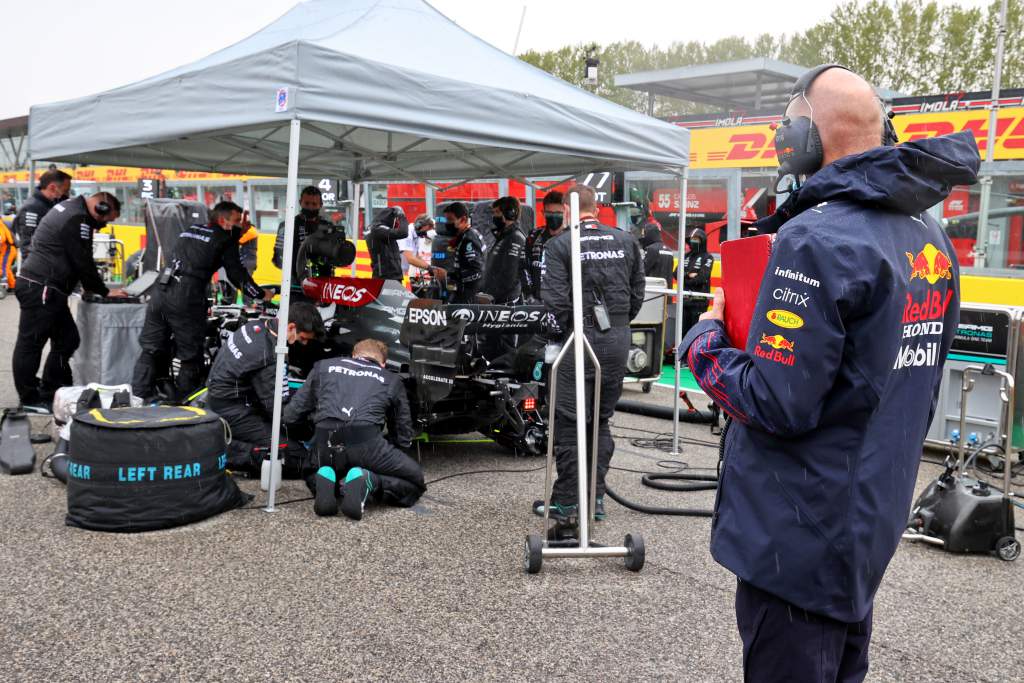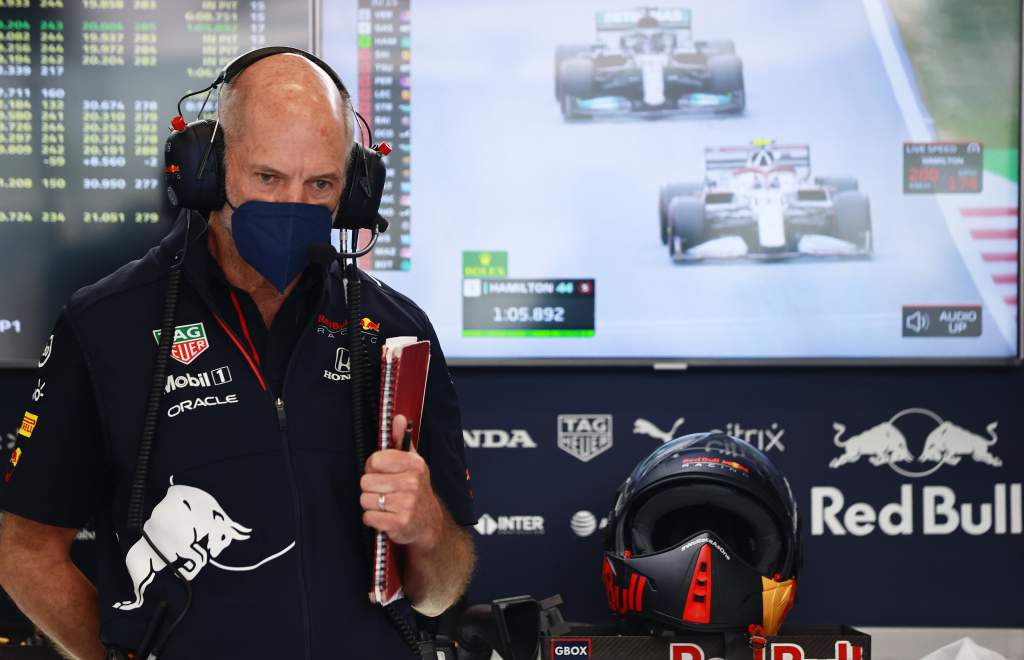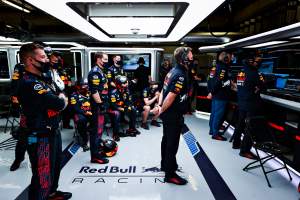Up Next

Red Bull chief technical officer Adrian Newey reckons there is more “behind the scenes politicking and lobbying” against his team than he can remember in Formula 1.
The 2021 season has developed into one of the most exciting in many years as Red Bull and Mercedes are locked in an intense fight that has ignited on-track and off it.
Questions have been raised over Red Bull’s flexing rear wing, its Honda engine and pitstop procedures during the season, with the flexi-wing row leading Red Bull to threaten that Mercedes should be under scrutiny for how much its front wing bends on-track.
In a wide-ranging discussion on Red Bull’s Talking Bull podcast Newey gave his take on the back-and-forth surveillance each of the two rivals undertakes – including his own method of physically observing other cars on the grid.
And in additional comments posted on Red Bull’s website, Newey said that “media spin and political manoeuvring” has become increasingly prominent in F1.
“We have experienced this before, but I can’t remember a time when we have received the same level of behind the scenes politicking and lobbying against our car,” he said.

“Possibly if you look back to when we were exploring aeroelastics in 2010/2011 [pictured above] then we were under constant scrutiny and would adapt to each changing set of regulations.”
He added: “That is the nature of Formula 1, and one of the things that makes it so stimulating.
“But it is the frequency and intensity of this year that is quite telling.”
In the podcast, he discussed how the top teams are “only interested in what their main rival’s doing”.
Citing Mercedes’ public stance against flexing rear wings employed by Red Bull and many other teams, Newey noted that “we were not the only team exploiting that”.
“But when Mercedes started making noise about it, they weren’t worried about what Alfa were doing,” he said.
“They were worried about whether we were getting a benefit from it.”
He added: “It is natural. We’ll equally be taking a careful eye on what Mercedes are doing and see if there’s anything they might be doing we might be able to take a pop at.
“I never particularly like the war analogy but it is a decent analogy.
“In the war analogy you look at every aspect you can to improve your competitive position.”

Newey has his own strategy of assessing rivals’ cars as he is often seen on the grid, armed with a red notepad, observing other machinery.
He said that while teams get “hundreds of photos of our competitors” he prefers to look upon their cars – and Red Bull’s own – in person than scrutinise so many 2D images.
“I still quite like looking at the cars because you can then walk around them and see them in 3D rather than the limitations of a photograph,” he explained.
“And I suppose it’s a little bit of laziness in that I don’t have the time to spend a lot of time endlessly looking at photographs of competitors.

“It’s easier to walk around and see which bits catch my attention.
“When the cars are in the garage I spend quite a lot of time looking at our own car.
“It’s just trying to look at different angles, what we’re doing, what other people are doing and see if that sparks any ideas.
“Which may not be a direct copy but [spark a] ‘why is somebody doing this or that?’ thought process.”
The off-track politics have become an increasing element of the title battle but it has been equally fraught on-track.
Mercedes driver Lewis Hamilton and Red Bull’s Max Verstappen collided controversially at the British Grand Prix, which led to Red Bull pushing for the FIA to review the incident and give Hamilton a harsher penalty after the event.
It failed to get the stewards to do so, primarily because it had “created” evidence from GPS data and its own simulations rather than “discovered” something new, and Mercedes seized on that opportunity to slam Red Bull’s chiefs for orchestrating a “concerted” effort to tarnish Hamilton’s image.
Newey believes it was “absolutely” correct for Red Bull to try to get the penalty reviewed though.
“Basically, the right to appeal is based on fresh evidence coming to light,” he said.
“It’s quite an old rule and the thought when it was drafted was that perhaps there might be somebody taking video in the grandstands that could provide a different angle, and that would be admissible as new evidence.
“In our case, we had analysis of GPS data, which I think is analogous to a video recorded in the grandstands.
The moment of impact between Hamilton and Verstappen 👀#BritishGP 🇬🇧 #F1 pic.twitter.com/kxbV5xPYPt
— Formula 1 (@F1) July 18, 2021
“Both are technically available during the event but neither will be available to the stewards – in the case of GPS it needs specialist analysis to make it viewable.
“In that sense, I was very disappointed that the stewards decided that wasn’t new evidence. It’s unfortunate but that’s their decision and we respect that.”





